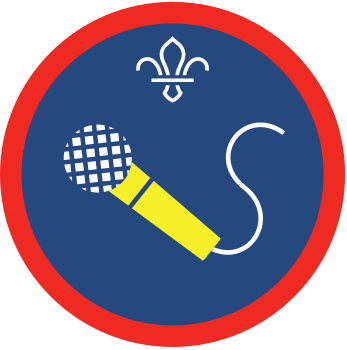Hot off the press
You’ll need
- Pens or pencils
- A4 paper
- Access to the internet
Before you begin
- You’ll need to start this activity before the event happens and finish it off afterwards. It’s best to ‘Investigate the event’ before the event, then ‘Write it right’ and ‘Send it out’ afterwards.
- It’s best for some people to attend the event to gather quotes and photos (if appropriate). They could ask people how or why they got involved in the event, and what part interests or excites them most.
- You could use any Scouts event at any level. You could think about a group camp or a demonstration for an important cause.
Investigate the event
- Everyone should split into small groups.
- Each group should think about how they can research the event. They could use the internet, leaflets, or contact the event organiser.
- Everyone should work together to gather information about the who, what, why, where, when and how of the event.
Write it right
- Each group should work together to create each section of their press release. They should keep the whole thing as short and snappy as possible – the best press releases are brief but informative and exciting.
- Everyone should create a catchy headline that makes it clear what the article’s about, for example, ‘Explorer Scouts champion people with dementia’.
- Everyone should craft an opening paragraph. This is one of the first things journalists will read, so it should be concise, clear, and cover all of the basic information (who, what, when, where, why, and how).
- Everyone should write a second paragraph. Now’s the time to elaborate on the opening paragraph with more detail about the event and why it’s happening – what inspired it, and what impact do the organisers hope it’ll make?
- Everyone should add in some quotes. It’s best to include them from people who took part in the event, whether they were the organiser, an entertainer, or a local figure. Quotes add validity and make articles more interesting.
- Everyone should finish the main body of their press release with a closing paragraph. This isn’t the place to introduce any important information (as it’s likely to be overlooked), but it’s great to summarise any ways the reader could get involved. Will there be another event in the same series? How could people find out more about the people involved in the event?
- At the bottom of the press release, everyone should add some notes for the editors they’ll send the release to. It’s useful to add the names of organisations or initiatives, a quick description, and even some contact details.
- Finally, everyone should think about any photos they may be able to send to show the action. They should make sure that they have any consent and permissions they need before they share photos anywhere.
Send it out
- The person leading the activity should reach out to their Media Development Manager, if they have one. They may be able to help everyone get their press releases published.
- Everyone should work together to send their press releases. They could look for email addresses on local and national newspaper websites, or ask in local shops and services (such as libraries and schools). It’s good to stay open minded about where the press release could be shared.
Reflection
This activity was all about communication. People probably communicated with some people (for example, event organisers or guests) and then had to pass information on using a limited number of words. Can anyone think of any other examples of when writing less is more? People could think about slogans on billboards or other adverts – people are more likely to read and remember them when they’re short and catchy.
This activity was also about developing journalistic skills. What skills did people use in this activity? People may think about the way they found out information, how they decided what to include, and how they crafted the perfect release. What was the most challenging part? Perhaps some people found it difficult to decide what information to include, or how to get the detail across in an interesting way. When else may people need to prioritise or make detailed information engaging?
Safety
All activities must be safely managed. You must complete a thorough risk assessment and take appropriate steps to reduce risk. Use the safety checklist to help you plan and risk assess your activity. Always get approval for the activity, and have suitable supervision and an InTouch process.
- Online safety
Supervise young people when they’re online and give them advice about staying safe. Take a look at our online safety or bullying guidance. The NSPCC offers more advice and guidance, too. If you want to know more about specific social networks and games, Childnet has information and safety tips for apps. You can also report anything that’s worried you online to the Child Exploitation and Online Protection Command. As always, if you’ve got concerns about a young person’s welfare, including their online experiences, follow the Yellow Card to make a report.
- Phones and cameras
Make sure parents and carers are aware and have given consent for photography.
Create the press releases however works for you – they could be handwritten or typed, based on the equipment people can access and what works best for them.
All Scout activities should be inclusive and accessible.
People could take the opportunity to flex their photography skills and snap the perfect shot for the press release. A great photo helps to illustrate the story and grabs the reader’s attention, and could give people the chance to work towards their Photographer Activity Badge.

